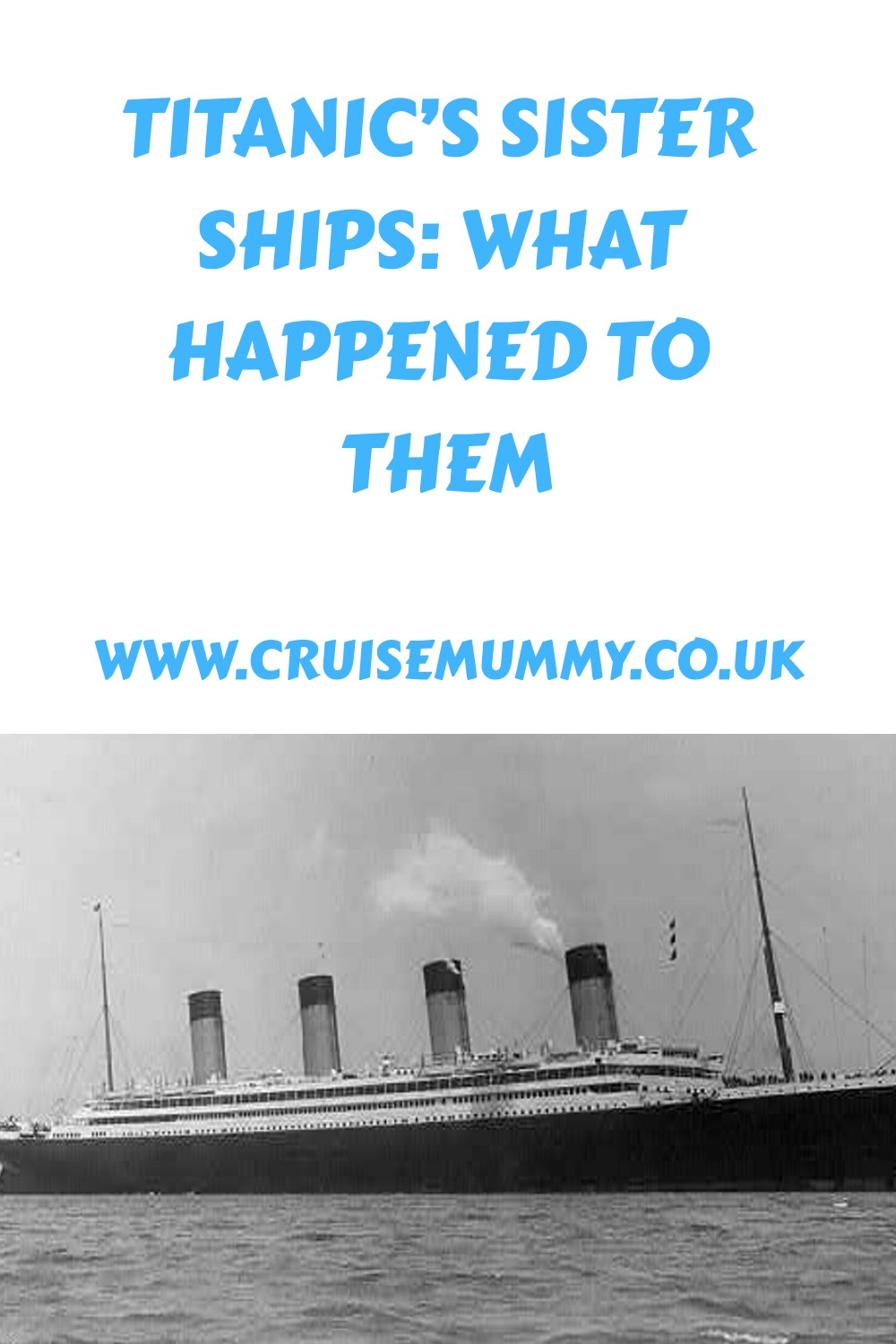Everyone knows the story of the Titanic. But did you know she had two nearly identical sister ships – built with the same grandeur, by the same company, around the same time?
They aren’t as famous, which is a good thing – the only reason the Titanic’s name endures is because of her sad end.
So what happened to her lesser-known sisters? Their stories might surprise you.
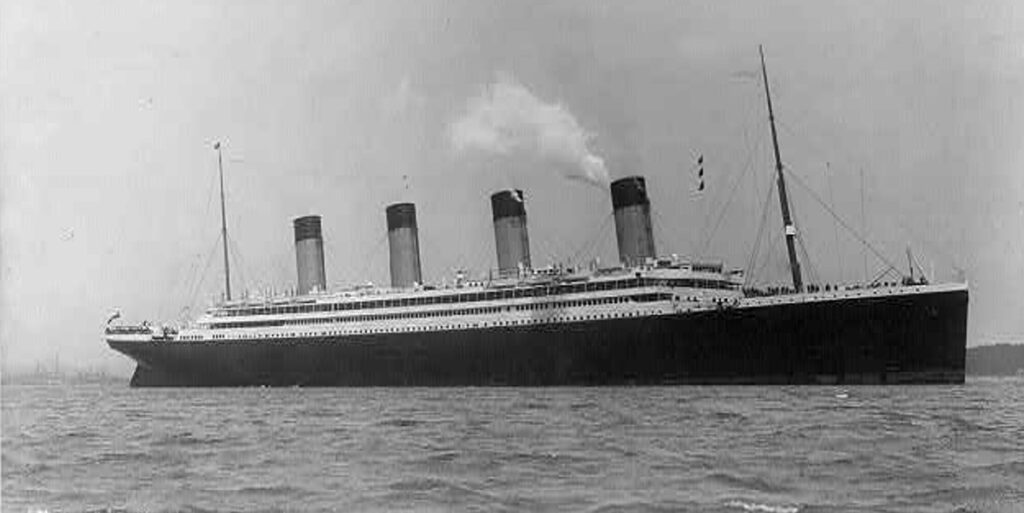
About Titanic’s sister ships
The Titanic had two sister ships. She was preceded by the Olympic (1911 to 1935) and she was followed by the Britannic (1914 to 1916). The Britannic also sank, but the Olympic had a long life until she was retired.
All three ships were built for the White Star Line by the shipyard Harland & Wolff, and they were designed to be the largest and most luxurious ocean liners in the world.
Unfortunately, for various reasons, they didn’t really get to see out their lives as intended.
The Olympic sailed for 24 years after she was first launched, serving primarily in her intended role as a luxurious passenger liner, although she was commandeered for the war for a few years.
The Britannic didn’t do as well – she was used as a ship for the war too, and was sunk during it.
Let’s look at the story of each ship in a little more detail.
Olympic
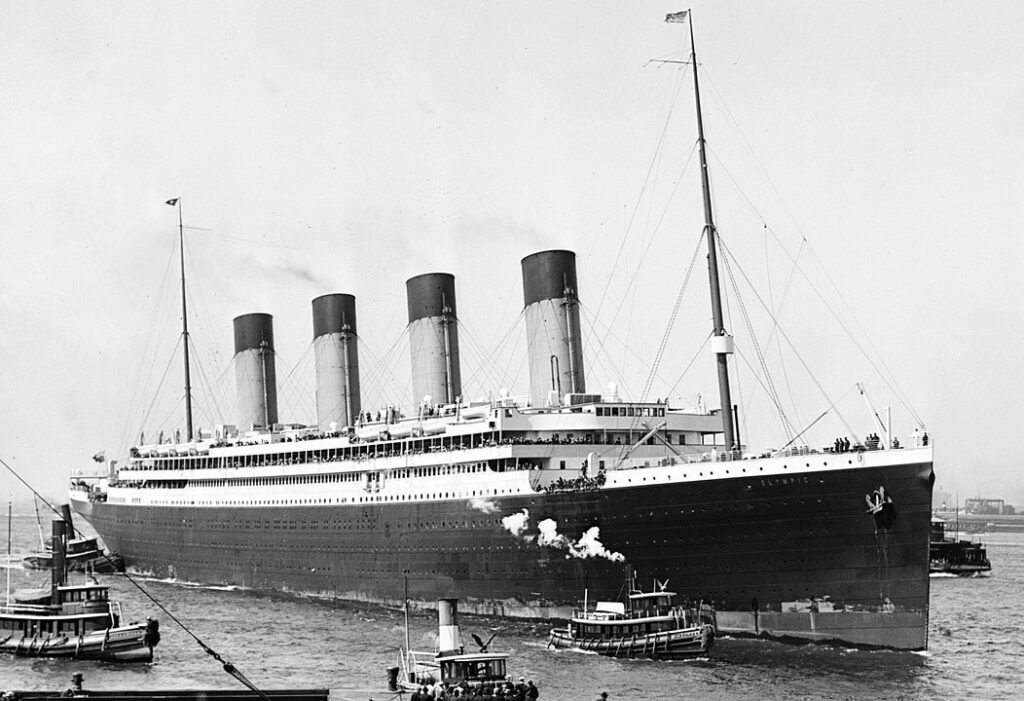
Bain News Service, Public domain, via Wikimedia Commons
The RMS Olympic was the first of the new Olympic-class ships to launch, making her debut in 1911. After departing Belfast following her sea trials, she arrived in Liverpool for her public debut. She then sailed to Southampton to prepare for her real maiden voyage.
She was designed to follow a similar route as the Titanic would later attempt – travelling across the Atlantic Ocean with calls first at Cherbourg and Queenstown. She arrived safely in New York after 7 days. She was captained by Edward Smith, who would sadly lose his life on the Titanic a year later.
Because the Olympic was, at the time, the largest ship in the world, this maiden voyage attracted a lot of attention from the press and the general public.
8,000 people came onboard the ship to look around while she was docked in New York, and it’s believed 10,000 people watched her leave the port on the return leg, according to ‘The Olympic Class Ships’, a book by Mark Chirnside.
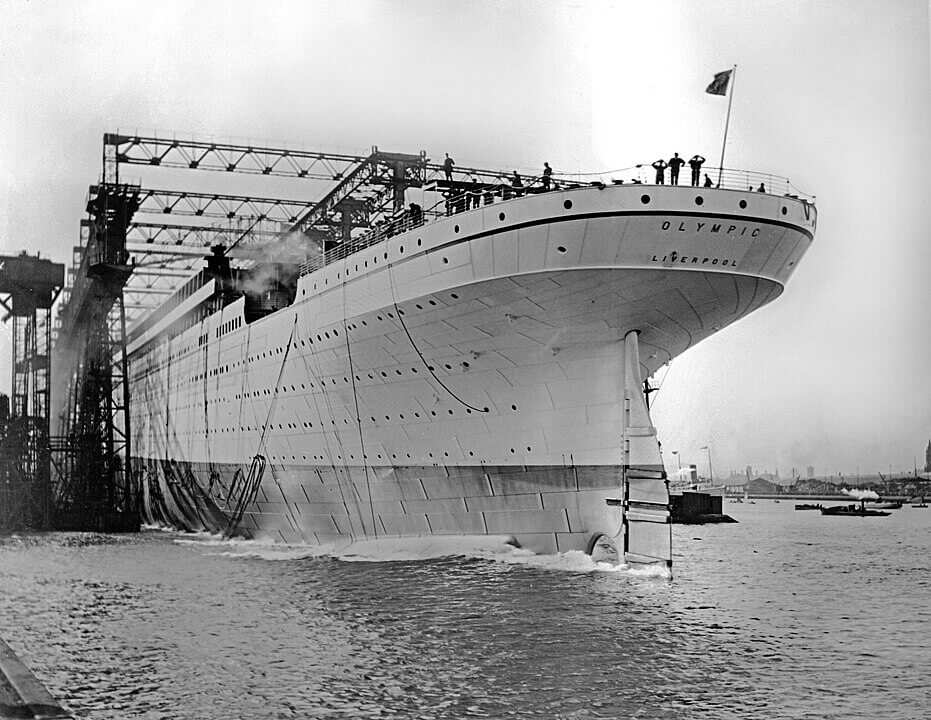
Robert Welch, Public domain, via Wikimedia Commons
Olympic’s first real negative incident of note took place on her fifth voyage. While sailing alongside the British cruiser HMS Hawke, the ships collided, tearing a couple of holes in the Olympic’s hull. She was able to return to Southampton under her own power and nobody was injured.
Two of the crew onboard during this incident were Violet Jessop (a stewardess) and Arthur John Priest, a stoker. They would work on the Titanic the following year and survive, before working on the Britannic when she also sank, again surviving.
Following repairs, the Olympic re-entered service, and she made efforts to assist the Titanic during the sinking incident. Unfortunately, she couldn’t get there in time.
The Olympic did offer to take the survivors from Cunard’s RMS Carpathia, but that ship’s captain refused, saying that asking the passengers to board a replica of the ship that had just sank would distress them.
The Olympic then returned to dock to be fitted with new temporary lifeboats.
Some of the crew would strike when the new lifeboats were deemed not to be seaworthy, and ultimately 54 of the crew were arrested for mutiny, and while they were found guilty, they were discharged without punishment. Later, the ship would have more permanent lifeboats and davits added.
In 1915 the ship was drafted into the war effort. Unlike many other privately-owned ships, she wasn’t converted into a hospital ship but served instead as troop transportation.
She did rescue crew from the battleship HMS Audacious during service, and once fitted with guns she attacked a U-boat in the English Channel and caused it to be scuttled.
Post-war, the ship was converted back into a passenger liner and served the cruise line with minimal incidents. She was given numerous upgrades, but by her final years she was proving to be unprofitable.
She was retired in 1935, and she sailed to Jarrow in the North-East to be scrapped. She had completed 257 round trips across the Atlantic by this point.
Read more: Key Differences Between Titanic and Olympic
Britannic
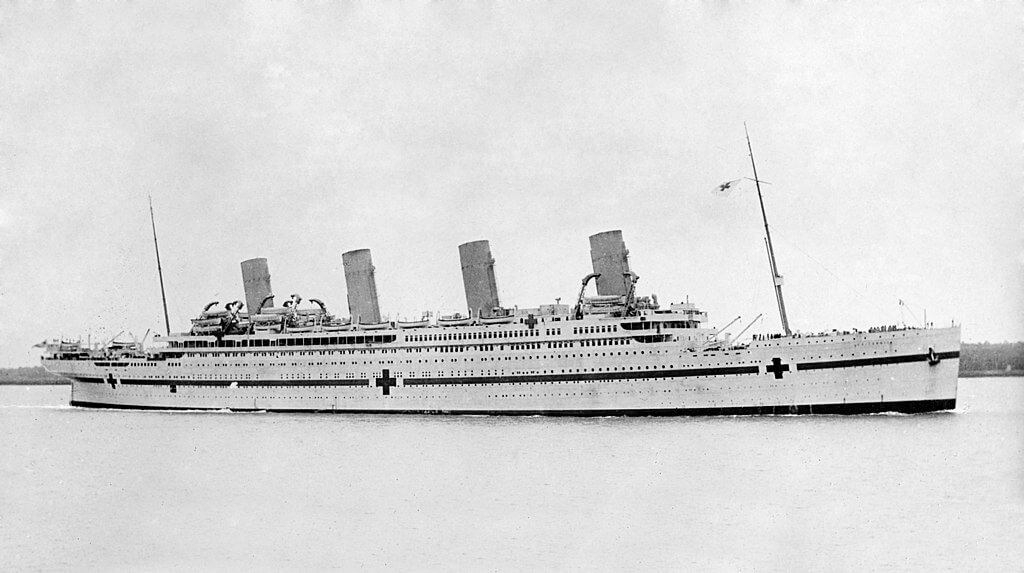
Allan C. Green, Public domain, via Wikimedia Commons
HMHS Britannic was the third and final ship in the Olympic class, and work began on her construction in 1911. However, she wasn’t launched until 1914, by which point her sister Titanic had already sunk.
And so, work began on improving the safety of Britannic before she launched. She was due to have a similar design to her earlier sisters, but changes were made to double-up the hull around the engine and boiler rooms, and to enhance the water-tightness of the central compartments so that the ship could still stay afloat with six compartments flooded.
The biggest change was arguably the addition of davits – cranes that could launch six lifeboats. The ship was planned to have eight of these davits installed but only five were ready when the ship was called into action.
That’s because, in 1915 when she was fully completed, the war was well underway and the ship was needed in service. She only had four weeks’ notice from her engine trials before she went into the war.
She was repainted with large red crosses and a green stripe, so that it was clear she was to be a hospital ship, and she had over 3,300 beds installed along with several operating rooms. Common areas were changed to be able to support wounded soldiers and many of the cabins were kept to house doctors.
She first left Liverpool in December 1915 to retrieve injured troops from the island of Lemnos in the Aegean Sea, and then was moored as a floating hospital off the Isle of Wight.
She then helped to evacuate the Dardanelles in 1916 and ended her military service in 1916, returning to Belfast to be refitted as a passenger ship. Two months later though, she was recalled into service. She made a fourth and fifth trip successfully.
Her sixth mission was her last though – after stopping to refuel as normal in Naples, she struck a mine in the Kea Channel. 35 lifeboats were successfully launched, carrying most of the people onboard. Sadly 30 people were killed.
The reasons that so few people lost their lives in comparison to their sister include the higher temperatures of the water (20 degrees C compared to -2 degrees C), the huge improvement in lifeboat launches (35 were launched by Britannic compared to just 20 for Titanic), and the proximity to land and therefore aide.
Lusitania is often mislabelled as a Titanic sister, but…
The Lusitania was not a sister ship of the Titanic. She was owned by rival cruise line Cunard (the same Cunard Line that still exists today). People often mistakenly believe they were sisters just because their sinking incidents are similar and were relatively close together in years.

George Grantham Bain, Public domain, via Wikimedia Commons
Cunard and White Star Line were rival companies, so it would be like asking if Carnival Celebration and Oasis of the Seas were sister ships, just because they had a similar design.
Unfortunately, the Titanic and Lusitania are only linked because they are two of the most famous cruise ships to have sunk.
Final word
The Titanic orphan twins led very different lives, with only the Olympic surviving long enough to really be able to learn the lessons from the sinking of the Titanic.
These three ships should have helped White Star Line to new heights, but poor safety planning and the outbreak of the war meant that only one of the three was able to enjoy the service she was designed for.
It’s also interesting to compare the Titanic to modern cruise ships because it shows you how the three Olympic-class ships would fare when side-by-side with some of the most contemporary vessels. So make sure you check that guide out!
Related posts
- Will The Titanic Ever Be Raised?
- Are There Still Bodies In The Titanic?
- Where Exactly Did The Titanic Sink?

Jenni Fielding is the founder of Cruise Mummy. She has worked in the cruise industry since 2015 and has taken over 30 cruises. Now, she helps over 1 million people per month to plan their perfect cruise holidays.

